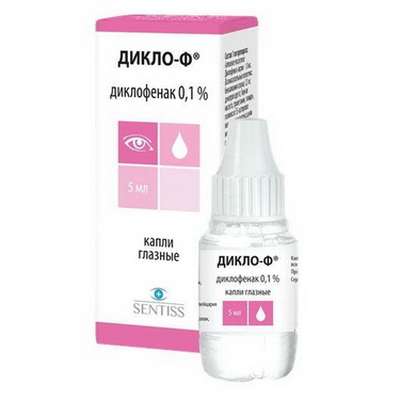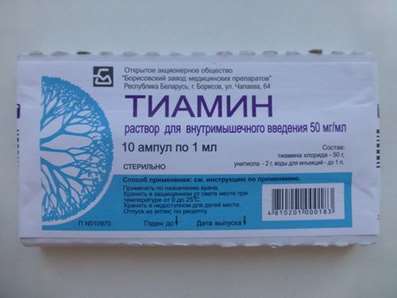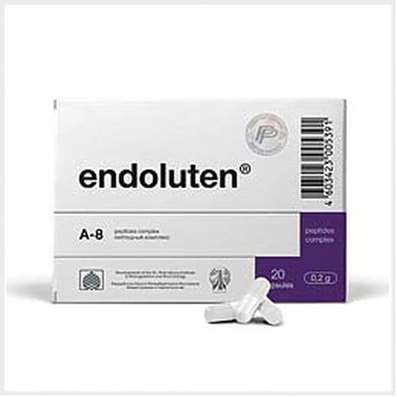Instruction for use: Sextaphag
I want this, give me price
Dosage form: Solution for oral, local and external use
Active substance: Pyobacteriofagum
ATX
V03A Therapeutic preparations other
Pharmacological group:
Vaccines, serums, phages and toxoids
The nosological classification (ICD-10)
A41.9 Septicemia, unspecified: Septic diseases; Septicemia / bacteremia; Toxico-infectious shock; Endotoxin shock; Bacterial septicemia; Bacterial infections of severe course; Generalized infections; Generalized systemic infections; Infections generalized; Wound sepsis; Septiccopymia; Septic-toxic complications; Septicemia; Septic conditions; Septic shock; Septic condition; Septic shock
A49.9 Bacterial infection, unspecified: Chronic bacterial infection; Chronic bacterial infections; Anaerobic bacterial infection; Bacterial superinfection; Acute bacterial infection; Bacterial infections of severe course; Intrahospital infections; Gram-negative aerobic pathogen; Secondary bacterial infections; Infections in Patients with Weakened Immunity; Infections in surgery; Postinfectious glomerulonephritis
H66.9 Otitis media, unspecified: Chronic otitis media; Otitis; Average otitis media; Middle ear infection; Otitis media in children
J01.9 Acute sinusitis, unspecified: Allergic sinusitis; Pain with sinusitis; Inflammation of nasal sinuses; Catarrh of the maxillary sinusitis; Polyposis sinusitis; Sinusitis; Sinusitis acute; Sinusitis; Purulent sinusitis
J02.9 Acute pharyngitis, unspecified: Purulent pharyngitis; Acute rhinopharyngitis; Lymphonodular pharyngitis
J03.9 Acute tonsillitis, unspecified (angina agranulocytic): Throat infections; Acute tonsillitis; Angina; Follicular tonsillitis; Angina alimentary-hemorrhagic; Secondary sore throat; Sore throat primary; Angina follicular; Angina; Inflammatory diseases of the tonsils; Catarrhal angina; Lacunar angina; Acute Sore Throat; Tonsillitis; Tonsillitis acute; Tonsillar angina; Follicular sore throat; Bacterial tonsillitis
J04.2 Acute laryngotracheitis: acute laryngotracheitis; Laryngotraheobronchitis acute
J18 Pneumonia without specification of pathogens: Alveolar pneumonia; Community-acquired pneumonia atypical; Community-acquired pneumonia non-pneumococcal; Pneumonia; Inflammation of the lower respiratory tract; Inflammatory lung disease; Shared pneumonia; Respiratory and lung infections; Infections of the lower respiratory tract; Cough with inflammatory diseases of the lungs and bronchi; Croupous pneumonia; Nosocomial pneumonia; Exacerbation of chronic pneumonia; Acute community-acquired pneumonia; Acute pneumonia; Focal pneumonia; Pneumonia abscessing; Pneumonia bacterial; Pneumonia croupy; Pneumonia of focal; Pneumonia with difficulty in sputum discharge; Pneumonia in AIDS patients; Pneumonia in children; Septic pneumonia; Chronic Obstructive Pneumonia; Chronic pneumonia; Lymphoid interstitial pneumonia
J31.2 Chronic pharyngitis: Pharyngitis chronic; Exacerbation of inflammatory diseases of the pharynx and oral cavity; Hypertrophic pharyngitis; Inflammatory process of pharynx; Sore Throat Infection; Infectious-inflammatory diseases of the pharynx; Infectious-inflammatory diseases of the oral cavity and pharynx; Atrophic pharyngitis
J32.9 Chronic sinusitis, unspecified: Polyposis rhinosinusitis; Inflammation of nasal sinuses; Inflammation of the lateral sinuses
J37.1 Chronic laryngotracheitis
J40 Bronchitis not specified as acute or chronic: Asthmatic bronchitis; Allergic bronchitis; Bronchitis allergic; Asthmatic bronchitis; Rhinotraheobronchitis; Asthmatic bronchitis; Bacterial bronchitis; Bronchitis; Bronchitis of the smoker; Bronchitis of smokers; Inflammation of the lower respiratory tract; Disease of the bronchi; Qatar smoker; Cough smokers; Cough with inflammatory diseases of the lungs and bronchi; Disturbance of bronchial secretion; Impaired bronchial function; Acute tracheobronchitis; Subacute bronchitis; Tracheobronchitis; Chronic lung diseases
K52.9 Non-infectious gastroenteritis and colitis, unspecified: Syndrome of senile intestine; Diarrhea chronic; Hemocolitis; Digestive tract infections; Collagenous colitis; Mucous colitis; Chronic colitis; Chronic enteritis; Infectious Disease of the GI tract; Colitis associated with taking antibiotics
K63.8.0 * Dysbacteriosis: Intestinal lymphangiectasia
K65 Peritonitis: Abdominal infection; Intra-abdominal infections; intra-abdominal infections; Diffuse peritonitis; abdominal Infections; Infections of the abdominal cavity; The infection of the abdominal cavity; The infection of the gastrointestinal tract; Spontaneous bacterial peritonitis
K81.9 Cholecystitis, unspecified: Infection of the gallbladder and bile duct; Infection of the gallbladder and bile ducts
L02.9 Skin abscess, furuncle and carbuncle, unspecified location: Multiple abscesses; Furuncle; Subcutaneous abscesses
L03.9 Phlegmon, unspecified
L08.9 Local infection of skin and subcutaneous tissue, unspecified: Soft tissue abscess; Bacterial or fungal infection of the skin; Bacterial skin infections; Bacterial infections of soft tissues; Bacterial skin infections; Bacterial skin lesions; Viral infection of the skin; Viral skin infections; Inflammation of cellulose; Inflammation of the skin at the injection site; Inflammatory skin diseases; Pustular skin diseases; Purulent-inflammatory disease of skin and soft tissues; Purulent-inflammatory skin diseases; Purulent-inflammatory diseases of the skin and its appendages; Purulent-inflammatory diseases of soft tissues; Purulent skin infections; Purulent infections of soft tissues; Skin Infections; Infections of the skin and skin structures; Infectious lesions of the skin; Infectious diseases of the skin; Skin Infection; Infection of the skin and its appendages; Infection of the skin and subcutaneous structures; Infection of the skin and mucous membranes; Infection of the skin; Dermal bacterial infections; Uncomplicated skin infections; Uncomplicated soft tissue infections; Surface erosion of the skin with secondary infection; Umbilical infection; Mixed skin infections; Specific infectious processes in the skin; Superinfection of the skin; Necrotizing subcutaneous infections
L10 Pemphigus [pemphigus]: Benign pemphigoid of the mucous membranes; Bubble dermatosis; Pemphigus; Dermatitis, vesicular; Benign pemphigus; Ordinary pemphigus; Pemphigus; Bubble dermatitis; Family benign pemphigus Hailey-Hailey
N12 Tubulointerstitial nephritis not specified as acute or chronic: Kidney infections; Infection of the kidneys; Tubulointerstitial nephritis; Uncomplicated pyelonephritis; Interstitial nephritis; Tubular Nephritis; Pyelitis; Pyelonephritis; Pyelocystitis; Postoperative kidney infection; Chronic inflammation of the kidneys
N30.9 Cystitis, unspecified: Cystitis, complicating bladder tumors
N34 Urethritis and urethral syndrome: Urethral buzhirovanie; Gonococcal urethritis; Urethrocystitis; Gonorrheic urethritis; Urethritis; Non-gonococcal urethritis; Negative urethritis; Lesion of the urethra; Acute gonococcal urethritis; Acute gonorrhea urethritis; Acute urethritis; Infection of the urethra; Bacterial nonspecific urethritis; Bacterial urethritis
N70 Salpingitis and oophoritis: Adnexitis; Inflammatory diseases of female genitalia; Inflammatory diseases of female genital organs; Infection of the genitals; Oophoritis; Acute adnexitis; Salpingitis; Salpingo-oophoritis; Chronic inflammatory diseases of the ovaries; Inflammation of the ovaries
N71.9 Inflammatory disease of uterus, unspecified
N76.8 Other specified inflammatory diseases of the vagina and vulva: Genital infections; Vaginosis; Nonspecific vaginitis; Nonspecific vulvovaginitis
P36 Bacterial sepsis of newborn: Neonatal sepsis
P38 Omphalitis of a newborn with little or no bleeding: Omphalitis
P77 Necrotizing enterocolitis in fetus and newborn: Enterocolitis necrotizing; Necrotizing enterocolitis and enteritis
R09.1 Pleurisy: Acute pleurisy; Calcification of the pleura
T30 Thermal and chemical burns of unspecified site: Pain syndrome with burns; Pain in burns; Pain with burns; Sluggishly healing post-burn wounds; Deep burns with a wet scab; Deep burns with abundant compartments; Deep burn; Laser burn; Burn; Burn of rectum and perineum; Burn with mild exudation; Burn disease; Burn injury; Superficial burn; Superficial burn of I and II degree; Superficial skin burns; After-burn trophic ulcer and wound; Post-burn complication; Loss of fluid in burns; Sepsis burn; Thermal burns; Thermal skin lesions; Thermal burn; Trophic after-burn ulcers; Chemical burn; Surgical burn
T79.3 Post-traumatic wound infection, not elsewhere classified: Inflammation after surgery and trauma; Inflammation after trauma; Secondary infection of skin and mucous membrane damage; Deep Wounds; Purulent wound; Purulent-necrotic phase of wound process; Purulent-septic diseases; Purulent Wounds; Purulent wounds with the presence of deep cavities; Granulating wounds of small size; Disinfection of purulent wounds; Wound infections; Infections wound; Infection of wounds; Infected and non-healing wound; Infected postoperative wound; Infected wound; Infected Skin Wounds; Infected burns; Infected Wounds; Suppurating postoperative wounds; Extensive purulent-necrotic process of soft tissues; Burn infections; Burn infection; Perioperative infection; Poorly healing infected wound; Postoperative and purulent-septic wound; Postoperative wound infection; Wound infection; Wound botulism; Wound infections; Wounds of purulent; Wounds infected; Reinfection of granulating wounds; Sepsis posttraumatic
Composition and release form
Solution for oral, topical and topical administration 1 ml
A mixture of phagolysate of staphylococci, streptococci, Escherichia coli, Proteus, Pseudomonas aeruginosa and Klebsiella pneumonia
In bottles of 20 ml; In a pack of cardboard 4 or 10 bottles.
Description of dosage form
Transparent liquid with a yellowish or greenish tinge.
Pharmachologic effect
Mode action - Antibacterial.
Pharmacodynamics
Piobacteriophage polyvalent (Sextafag) has the ability to specifically lyse microorganisms (staphylococci, streptococci, pathogenic intestinal and pseudomonas aeruginosa), Proteus mirabilis, Proteus vulgaris, Klebsiella pneumoniae.
Indications for the preparation Sextaphag
Prevention and treatment of various forms of diseases and conditions caused by the pathogens listed above:
Purulent-inflammatory diseases of the ear, throat, nose, respiratory tract, lungs and pleura (inflammation of the sinuses of the nose, middle ear, sore throat, pharyngitis, laryngitis, tracheitis, bronchitis, pneumonia, pleurisy);
Surgical infections (purulent skin lesions, suppuration of wounds, abscess, phlegmon, mastitis, osteomyelitis, peritonitis, burns);
Urogenital infection (urethritis, cystitis, pyelonephritis, colpitis, endometritis, salpingoophoritis);
Enteral infections (gastroenterocolitis, cholecystitis, intestinal dysbacteriosis);
Generalized septic states;
Purulent-septic diseases in newborns and infants (omphalitis, pemphigus, gastroenterocolitis, sepsis).
Treatment of freshly infected wounds;
Prevention of nosocomial infections according to epidemiological indications.
Contraindications
Individual intolerance of the drug.
Side effects
There were no reactions to the administration of the polypobacterial pyobacteriophage.
Dosing and Administration
Piobacteriophage polyvalent is applied depending on the nature of the focus of infection: locally in the form of rinses, irrigation, lotions; Intracavitary for insertion into the wound cavity, abscesses, abdominal, pleural, for splitting phlegmon, insertion into the nasal cavity, nasal sinuses, middle ear cavity, bladder, uterus, vagina. In addition, the drug is taken orally, injected through the probe, and also in the form of high enemas.
The duration of the course of treatment with Piobacteriophage polyvalent is from 5 to 15 days; Apply 1-3 times a day.
The dose is determined individually. It is possible to conduct repeated courses of treatment.
With pyelonephritis, enterocolitis, cholecystitis, intestinal dysbacteriosis, any purulent-septic diseases of different locations - per os, in liquid form 5-20 ml 3 times a day for 10-15 days.
With indomitable vomiting and in children of the first year of life, additional administration of Piobacteriophage polyvalent through the probe is possible, in the form of high enemas in a dose of 3-5 ml daily for 5-7 days.
Locally Piobakteriofag polyvalent is used in the form of irrigation, lotions and tamponing in an amount up to 200 ml, taking into account the size of the affected area.
Intracavitary - 5-30 ml each.
With abscesses, the amount of polypentine Piobacteriophage administered should be somewhat less than the volume of the removed pus; Appoint 1-3 times a day, the course - 5-15 days.
In proctology for preoperative preparation Piobacteriophage polyvalent is used in the form of drop enemas (100-200 ml at 60 drops per minute).
When infections of ENT organs: intracavitary - 2-20 ml 1-3 times a day.
In the treatment of omphalitis, pyodermia of newborns: in the form of applications, lotions daily 2 times a day for 5-7 days.
When ingesting a liquid form to children older than 3 years and adults, you should take a solution of drinking soda (0.5 tea lollies per 0.5 cup of water) inside.
When topical application of Piobacteriophage is polyvalent, if chemical antiseptics (except furatsilin) were used to treat wounds, the wound should be washed with a sterile physiological solution of sodium chloride or 2-3% with a solution of soda.
Special instruction
Opening of vials and ampoules, the procedure for the administration of polypobacteriobacteriophage is carried out with strict adherence to the rules of antiseptic. Before use, the vials and ampoules are shaken and scanned - the preparation should be clear and free of sediment. If the drug is clouded or the integrity of the package is not affected, it is not used. Storage of the drug after opening the vial or ampoule is not allowed.
The use of the polyvental polypobacteriophage does not exclude the use of other antibacterial and anti-inflammatory drugs.
Storage conditions of the drug Sextaphag
At a temperature of 2-8 ° C.
Keep out of the reach of children.
Shelf life of the drug Sextaphag
2 years. 6 months after re-control.
Do not use after the expiry date printed on the package.

 Cart
Cart





